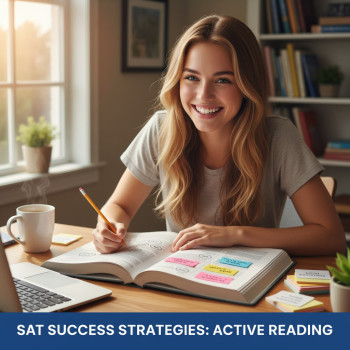The SAT (Scholastic Assessment Test) has become increasingly important for Indian students aspiring to study in top American universities. With acceptance rates at prestigious institutions becoming more competitive each year, choosing the right preparation strategy can make the difference between acceptance and rejection. One of the most crucial decisions you’ll face is whether to opt for one-on-one SAT tutoring or join group classes. Both approaches have their merits, but which one truly delivers better results for Indian students?
Understanding the SAT Landscape for Indian Students
Before diving into the comparison, it’s essential to understand the unique challenges Indian students face when preparing for the SAT. Unlike American students who are naturally immersed in English throughout their academic journey, Indian students often need to bridge cultural and linguistic gaps while mastering test-taking strategies.
The SAT consists of two main sections: Evidence-Based Reading and Writing (EBRW) and Math, with an optional Essay section. While Indian students typically excel in mathematics due to our rigorous educational system, the reading and writing sections often pose greater challenges, requiring familiarity with American literary contexts and advanced vocabulary.
One-on-One SAT Tutoring: The Personalized Approach
Advantages of Individual Tutoring
Customized Learning Experience One-on-one tutoring offers unparalleled personalization. Your tutor can identify your specific strengths and weaknesses within the first few sessions and create a tailored study plan accordingly. If you’re struggling with critical reading but excelling in algebra, your tutor can allocate more time to reading comprehension strategies while maintaining your math skills. Leading platforms like Sparkl understand this need for personalization and connect students with tutors who specialize in addressing individual learning gaps.
Flexible Scheduling For Indian students juggling board exam preparation alongside SAT prep, flexibility becomes crucial. Private tutors can accommodate your school schedule, festival breaks, and exam periods. This is particularly beneficial for students in Classes 11 and 12 who need to balance CBSE/ICSE board preparations with SAT goals.
Immediate Feedback and Doubt Resolution In one-on-one sessions, you can ask questions immediately without feeling embarrassed or worrying about slowing down other students. This is especially important for Indian students who might hesitate to speak up in group settings due to accent concerns or fear of judgment.
Focused Attention on Problem Areas If you consistently struggle with specific question types, such as data interpretation or literary analysis, your private tutor can spend entire sessions addressing these weaknesses. This targeted approach often leads to faster improvement in problem areas.
Cultural Bridge Many experienced SAT tutors understand the cultural nuances that Indian students face. They can explain American cultural references in reading passages, help with idiomatic expressions, and provide context that makes comprehension easier.
Disadvantages of Individual Tutoring
Higher Cost The most significant drawback of private tutoring is the cost. Making it expensive for many families, especially when considering the 40-60 hours typically needed for comprehensive preparation. However, platforms like Sparkl are working to make personalized tutoring more accessible through innovative pricing models and flexible payment options.
Limited Peer Interaction You miss out on learning from peers’ questions and approaches. Sometimes, hearing how another student tackles a problem can provide valuable insights that you might not have considered.
Potential Over-dependence Some students become overly reliant on their tutor’s guidance and struggle to develop independent problem-solving skills, which are crucial during the actual exam.
Tutor Quality Variability Finding a qualified, experienced SAT tutor who understands both the test format and Indian students’ needs can be challenging. The quality of instruction varies significantly among private tutors. This is where carefully curated platforms can help by vetting tutors for their expertise and track record.
Group Classes: The Collaborative Learning Environment
Advantages of Group Classes
Cost-Effective Solution Group classes are significantly more affordable than private tutoring. Most reputable SAT prep centers in India have affordable fees for complete courses, making quality preparation accessible to more students.
Structured Curriculum Established SAT prep centers offer well-structured curricula developed over years of experience. These programs cover all test sections systematically, ensuring no important topics are missed.
Peer Learning and Motivation Learning alongside peers creates a competitive yet supportive environment. You can learn different problem-solving approaches from classmates and stay motivated through shared goals and experiences.
Simulated Test Environment Group classes often include regular practice tests conducted in conditions similar to the actual SAT, helping you build stamina and manage test anxiety effectively.
Access to Resources Reputable centers provide comprehensive study materials, practice tests, and often have tie-ups with international prep companies, giving you access to high-quality resources that might be expensive to purchase individually.
Expert Instructors Many group class instructors are highly qualified and experienced in SAT preparation, often with advanced degrees and years of teaching experience specifically focused on standardized test prep.
Disadvantages of Group Classes
One-Size-Fits-All Approach Group classes follow a predetermined pace and curriculum that may not align with your learning speed or specific needs. If you’re a quick learner, you might feel held back, while slower learners may feel rushed.
Limited Individual Attention With 15-30 students in a typical class, instructors have limited time to address individual queries or provide personalized guidance. Your specific weaknesses might not receive adequate attention.
Fixed Scheduling Group classes operate on fixed schedules that may conflict with your school timings, extra-curricular activities, or family commitments. Missing classes can disrupt your learning continuity.
Peer Pressure and Competition While competition can be motivating, it can also create unnecessary stress. Some students may feel intimidated by high-performing peers, affecting their confidence and learning experience.
Making the Right Choice: Factors to Consider
Your Current Skill Level If you’re starting with a strong foundation (scoring above 1300 on practice tests), group classes might provide sufficient support to reach your target score. However, if you’re beginning with scores below 1200, personalized attention through one-on-one tutoring could be more beneficial.
Learning Style Preferences Visual and auditory learners often thrive in group settings with varied teaching methods and peer discussions. Kinesthetic learners who need hands-on practice and immediate feedback might benefit more from individual tutoring.
Budget Considerations Be realistic about your family’s budget. While one-on-one tutoring might seem ideal, a good group class combined with self-study can be equally effective at a fraction of the cost. Some platforms are innovating to bridge this gap by offering affordable personalized learning solutions.
Time Availability If you have limited time due to board exam preparations or other commitments, efficient one-on-one sessions might help you achieve your goals faster than attending lengthy group classes.
Target Score Goals Students aiming for scores above 1500 often benefit from the intensive, personalized approach of individual tutoring. For target scores between 1200-1400, group classes combined with additional practice can be sufficient.
The Hybrid Approach: Best of Both Worlds
Many successful SAT candidates in India opt for a hybrid approach that combines the benefits of both methods:
Start with Group Classes: Begin with group classes to build foundational knowledge and learn test-taking strategies in a structured environment.
Add Individual Sessions: Supplement with a few one-on-one sessions to address specific weaknesses identified during group preparation. Platforms like Sparkl make it easy to find specialized tutors for targeted improvement in specific areas.
Utilize Online Resources: Complement both approaches with online practice platforms like Khan Academy (free SAT prep), College Board’s official materials, and other digital resources.
Success Stories: Real Results from Indian Students
Consider Priya from Delhi, who started with a 1180 practice score. She joined group classes for structured learning and later added 10 individual tutoring sessions to focus on her reading comprehension weakness. Her final SAT score: 1460.
In contrast, Arjun from Mumbai, starting with a 1350 practice score, worked exclusively with a private tutor for 20 sessions, achieving a final score of 1520. His personalized approach helped him perfect his already strong foundation.
Many students have also found success through innovative platforms that combine the best of both worlds—providing personalized attention while maintaining cost-effectiveness through technology-enabled solutions.
Making Your Decision: A Practical Framework
Ask yourself these key questions:
- What’s your baseline score? Take a practice test to understand your starting point.
- What’s your target score and timeline? Higher targets and shorter timelines may favor individual tutoring.
- What’s your budget? Be honest about what you can afford sustainably.
- How do you learn best? Reflect on your most successful learning experiences.
- What specific areas need work? Identify whether your challenges are broad-based or specific.
Maximizing Success Regardless of Your Choice
Regardless of whether you choose one-on-one tutoring or group classes, certain strategies will enhance your SAT preparation:
Consistent Practice: Regular practice is more important than intensive cramming sessions.
Official Materials: Always prioritize College Board’s official practice tests and materials.
Vocabulary Building: Start building SAT-level vocabulary early, focusing on words in context rather than rote memorization.
Reading Habit: Develop a habit of reading American publications like The New York Times, The Atlantic, or Scientific American to familiarize yourself with the writing style and cultural context.
Time Management: Practice with strict time limits to build speed and accuracy.
The Bottom Line
The choice between one-on-one SAT tutoring and group classes isn’t about which is universally better, but rather which aligns better with your individual needs, learning style, budget, and goals. Many successful Indian students have achieved their target scores through both approaches.
Group classes offer structure, peer learning, and cost-effectiveness, making them ideal for students who thrive in collaborative environments and need comprehensive foundational preparation. One-on-one tutoring provides personalization, flexibility, and targeted improvement, making it perfect for students with specific needs or ambitious score goals.
As the education landscape evolves, new solutions are emerging that combine the benefits of both approaches. Platforms like Sparkl are pioneering ways to make personalized learning more accessible, helping bridge the gap between cost and quality in SAT preparation.
Remember, the most important factor in SAT success isn’t the type of preparation you choose, but your commitment to consistent practice and improvement. Whether you’re sitting in a group class, working one-on-one with a tutor, or using innovative hybrid solutions, your dedication and effort will ultimately determine your success.
Take time to honestly assess your needs, try out different approaches if possible, and choose the method that feels right for your learning style and circumstances. With the right preparation strategy and consistent effort, you’ll be well on your way to achieving your target SAT score and securing admission to your dream American university.
The SAT might seem daunting, but with proper preparation, whether individual, group-based, or through innovative new approaches, thousands of Indian students successfully navigate this challenge every year. You can be one of them too.

















No Comments
Leave a comment Cancel